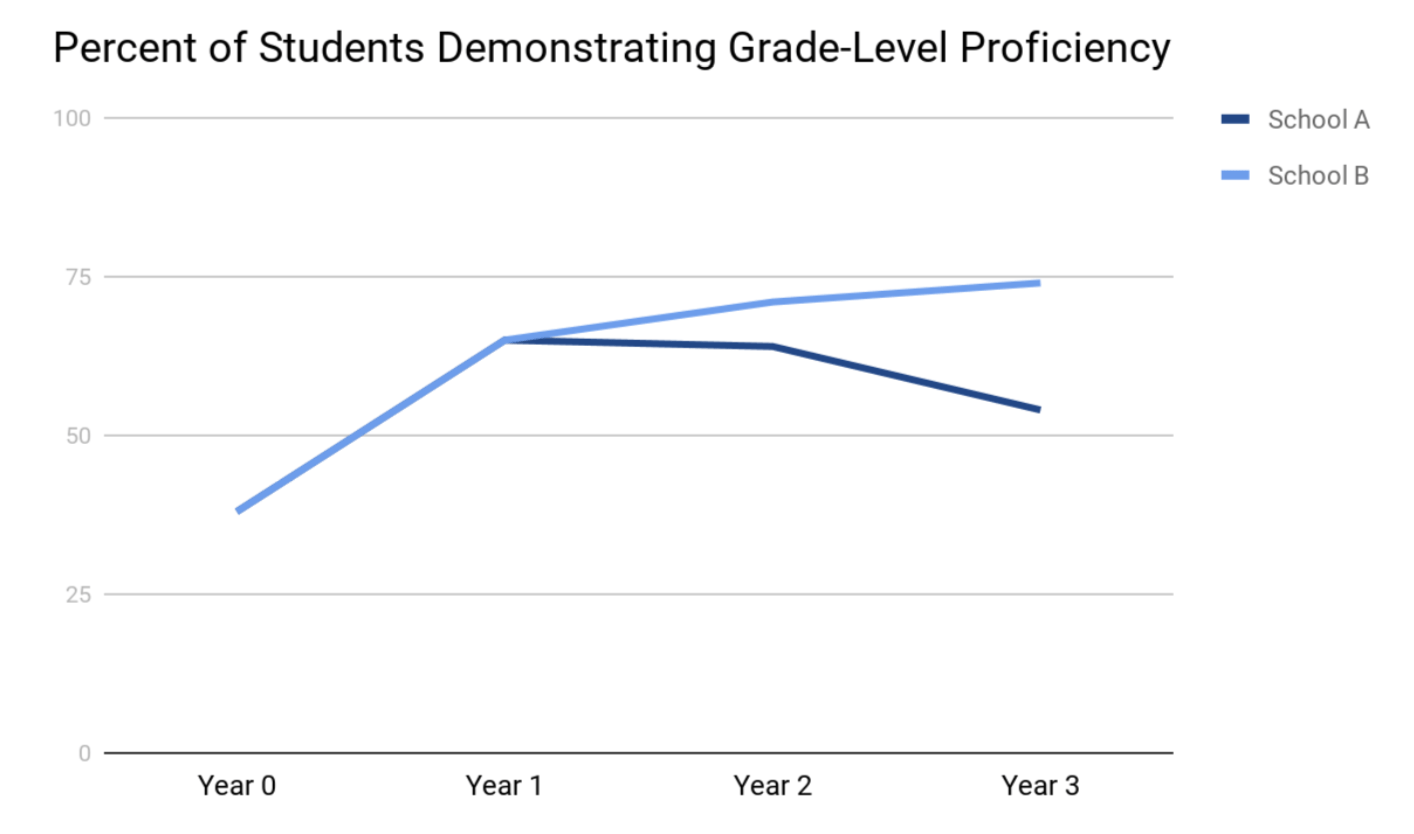How to avoid the student learning plateau in blended programs
January 29, 2019 |
January 29, 2019 |
 It takes time to achieve results. Whether starting a new exercise program, restructuring your team, or trying out a new morning routine, we’ve all realized that it usually takes months or even years to see the results of our hard work. Since I started my role as a blended-learning coordinator in 2016, I have found that implementing blended programs is no exception to this rule: it will take time to see the accurate results of your school’s blended-learning program—but not in the way you may think.
It takes time to achieve results. Whether starting a new exercise program, restructuring your team, or trying out a new morning routine, we’ve all realized that it usually takes months or even years to see the results of our hard work. Since I started my role as a blended-learning coordinator in 2016, I have found that implementing blended programs is no exception to this rule: it will take time to see the accurate results of your school’s blended-learning program—but not in the way you may think.
I want to start by saying that the argument I am offering here is largely anecdotal at this point, and I do not have a large data pool to illustrate my findings. However, I have conferred with many of my colleagues in the field and we’ve agreed on the patterns we see associated with the results of blended implementations. Through our collective experience working with close to 100 schools implementing blended-learning programs, we have witnessed the same learning growth trends over and over again, and those are the trends I share with you today.
There is an initial spike in learning growth
Unlike many school-improvement initiatives that often yield no measurable results in the first semester or year, blended-learning programs often show fantastic results in student learning growth early on. I hypothesize that this is a consequence of the personalized software programs that the students use. Many of the sophisticated programs on the market now incorporate the best of learning science and gamification techniques to provide high-quality, engaging learning experiences that reach the students at the levels appropriate for each of them. For many students, this is, unfortunately, the first time they have ever learned in a way that they find exciting and accessible. Their engagement in learning targeted to their specific needs often leads to dramatic growth in their first year of using the online learning programs.
Success in years two and three depend on school culture and quality of instruction
The true test of the program’s success, however, comes in years two and three. After the dramatic growth students experience in the first year, the results typically either plateau or continue to steadily increase, and I have seen that this depends almost entirely on the school culture and quality of instruction. No matter how engaging and instructionally sound a program may be, students’ progress in online learning programs will almost always slow in the second or third year without strong supports in place from the teacher. As we have written many times before, the teacher is the key to the success of a blended-learning program—and results will confirm that after the initial online learning honeymoon period wears off.
Consider the following scenario to illustrate this point: School A (dark blue line) and School B (light blue line) both start implementing blended learning and see an impressive increase in the percent of students that are proficient in the first year! In subsequent years, the students’ growth in School A bottoms out as the students have a series of teachers that do not “blend” learning well. These teachers use the online-learning programs as digital babysitters more than anything else. They rarely check the data from the programs, do not incorporate additional engagement techniques, and do not personalize students’ offline learning. In this case, the school is likely relying on the software program to fill students’ gaps in knowledge and accelerate their learning, and the results will not be sustained over time.

The students in School B (light blue line), however, continue to grow as their teachers develop tools to engage students in their online learning, become more comfortable using the data to adjust and inform their instruction on a daily basis, find new ways to support students who do not prefer to learn online, and push students beyond some of the basic skills they learn and demonstrate online with application and justification activities in class. Students in School B are likely in a school that invests time in developing their teachers’ capacity to deliver effective, differentiated instruction that is supported by, but not reliant on, the software.
It can be tempting to jump with joy when you see great results from the first year of a blended-learning program—and by all means, you should celebrate your school’s success—but the more meaningful results will come in later years, after the initial bump from the software programs. In my experience, I have found that focusing on building teacher capacity leads to long-term, continuous growth. So which will your school be, School A or School B?
Elizabeth Anthony leads blended-learning implementations in K–12 Catholic schools as the associate director of blended learning for the Alliance for Catholic Education (ACE).
May 08, 2019 at 2:31 pm, Tonya Brugger said:
It seems logical that students would need to be supported in blended learning and that some students will respond well to online learning whereas other students may feel they learn better from direct instruction. I believe that if the teacher is excited and encourages the blended learning that more students and parents will buy into it and more successful it will become in the classroom.